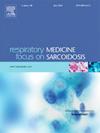潮末二氧化碳,一种评估急性哮喘严重程度的即时生物标志物:一项系统综述。
IF 3.5
3区 医学
Q2 CARDIAC & CARDIOVASCULAR SYSTEMS
引用次数: 0
摘要
背景与目的:准确的急性哮喘严重程度评估对指导患者的管理和处置至关重要。潮汐末二氧化碳(EtCO2)已被提议作为这一目的的实时测量。本研究旨在系统地回顾EtCO2测量在评估急性哮喘发作严重程度方面的文献。方法:检索5个数据库。研究纳入了任何年龄的急性哮喘发作患者和至少一项临床结果测量。排除了插管患者和门诊患者的研究。两位独立的审稿人先对摘要进行筛选,然后对全文进行筛选。结果:共纳入1242条记录,11项研究纳入综述。五分之三的研究发现,在最终入院的患者和从急诊科出院的患者之间,血管造影测量有显著差异。初始EtCO2较低的患者更有可能需要住院治疗。造影波形的其他组成部分与性格有关,包括较大的α角和较低的III期持续时间与呼吸频率之比与住院有关。七项研究检查了导管造影测量与其他气道阻塞标志物之间的相关性,通常发现相关性较弱或不存在相关性。三项研究报告了治疗后血管造影测量的显著变化。结论:较低的EtCO2可预测急性哮喘发作的预后较差。从造影波形中采取的其他措施似乎是严重程度的有用指标。解决患者选择问题并开展具有临床终点的EtCO2预后准确性研究可能为临床实践提供有意义的证据。本文章由计算机程序翻译,如有差异,请以英文原文为准。
End-tidal carbon dioxide, a point-of-care biomarker to assess severity in acute asthma: A systematic review
Background and objective
Accurate severity assessment in acute asthma is vital to guide patient management and disposition. End-tidal carbon dioxide (EtCO2) has been proposed as a real-time measure for this purpose. This study aimed to systematically review literature on EtCO2 measurement in assessing the severity of acute asthma exacerbations.
Methods
Five databases were searched. Studies with patients of any age with acute asthma exacerbations and at least one clinical outcome measure were included. Studies on intubated patients and outpatients were excluded. Two independent reviewers screened abstracts and then full texts for eligibility.
Results
1242 records were identified and 11 studies were included in the review. Three out of five studies found significant differences in capnography measures between patients eventually admitted and those discharged from the emergency department. Patients with lower initial EtCO2 were more likely to require hospital admission. Other components of the capnography waveform were associated with disposition, including a larger alpha angle and a lower ratio between phase III duration and respiratory rate being associated with hospital admission. Seven studies examined correlations between capnography measures and other markers of airway obstruction and weak or absent correlations were generally found. Three studies reported significant change in capnography measures after treatment.
Conclusion
Lower EtCO2 may predict poorer outcome in acute asthma exacerbations. Other measures taken from the capnography waveform appear to be useful indicators of severity. Addressing patient selection issues and conducting prognostic accuracy studies of EtCO2 with clinical endpoints may provide meaningful evidence for clinical practice.
求助全文
通过发布文献求助,成功后即可免费获取论文全文。
去求助
来源期刊

Respiratory medicine
医学-呼吸系统
CiteScore
7.50
自引率
0.00%
发文量
199
审稿时长
38 days
期刊介绍:
Respiratory Medicine is an internationally-renowned journal devoted to the rapid publication of clinically-relevant respiratory medicine research. It combines cutting-edge original research with state-of-the-art reviews dealing with all aspects of respiratory diseases and therapeutic interventions. Topics include adult and paediatric medicine, epidemiology, immunology and cell biology, physiology, occupational disorders, and the role of allergens and pollutants.
Respiratory Medicine is increasingly the journal of choice for publication of phased trial work, commenting on effectiveness, dosage and methods of action.
 求助内容:
求助内容: 应助结果提醒方式:
应助结果提醒方式:


